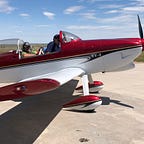The Pucará at war
By the late 1980s, the insurgency in Sri Lanka’s north was taking on aspects of a significant conflict. The Liberation Tigers of Tamil Eelam (LTTE) had consolidated their disparate rebel groups and were posing a substantial threat to the state. As the struggle escalated, the use of air power was seen as a critical edge for the government’s forces.
The Sri Lanka Air Force (SLAF) had shed most of its combat capabilities with the small fleet of Mikoyan-Gurevich MiG-17s and a solitary MiG-15UTI two-seat trainer, in service with the SLAF and its nominal predecessor the RCyAF (Royal Ceylon Air Force) since 1971, being retired in the late 1970s. At the onset of hostilities with the Tamil Tiger rebels, the service was focusing its resources on transport and helicopter operations.
The latest acquisitions initially comprised helicopters, with several Bell 212s and 412s being inducted, some with offensive capabilities. The first fixed-wing type acquired for combat duty was the SIAI-Marchetti SF.260TP single-engine turboprop, a training aircraft adapted for ground attack duties, introduced in 1985. A variant of the Lycoming piston engine-powered SF.260W Warrior also used by the SLAF, the SF.260TP was capable and accurate in the hands of a skilled pilot, although it was “…vulnerable to ground fire and had a very limited payload” in the words of Air Chief Marshal Kolitha Gunatilleke, who commanded…
